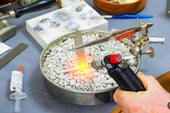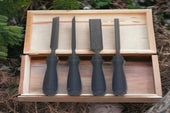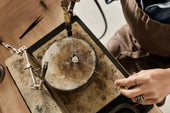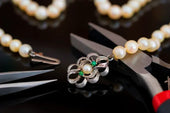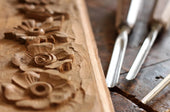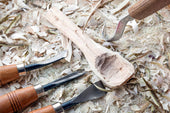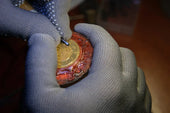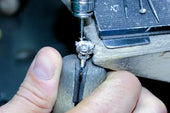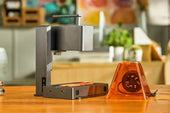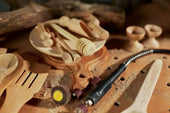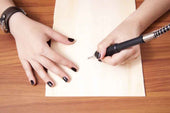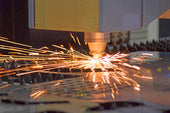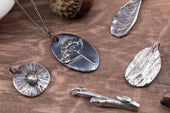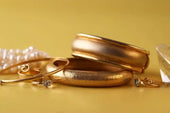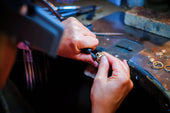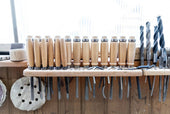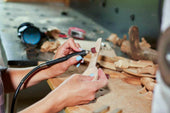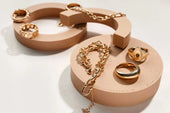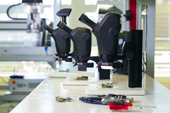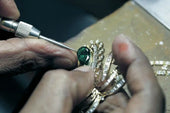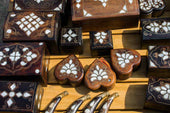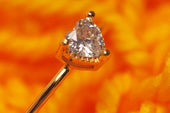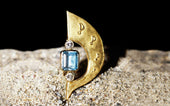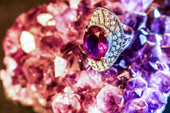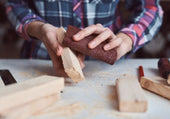From the earliest days of hand engraving to the advent of the engraving machine after the industrial revolution, the technique of hand engraving was once on the verge of extinction. However, with artists using their own hands to produce a piece of beautiful metal engraving works using basic engraving tools, let people see the unlimited possibilities of hand-engraved metal. Hand engraved metal is a technique that is really worth recognizing and learning.
What is hand engraving metal technology?
Throughout history, hand engraving has been the most basic and important of all engraving types in existence. It is an art form that dates back as far as centuries and requires great skill, patience and precision. The technique of hand engraving metal involves the manual manipulation of tools such as carving knives, chisels, and scoring knives to engrave designs directly onto metal surfaces without the aid of machinery.
Methods of Hand Engraving Metal
Common methods of hand engraving metal include the hammer and chisel method, the carving knife method, and the hammering method.
Hammer and Chisel
As the oldest hand-carving technique, it focuses on integrating sculptural form with detailed finishing. Utilizing hammers and chisels (such as bolsters, flat chisels and pointed chisels) to create intricate designs on metal surfaces. Suitable for a wide range of materials, including various steels and alloys, copper, aluminum, as well as non-ferrous and precious metals. This adaptability makes it the preferred method for adding decorative elements to metal objects.
Engraving Knife Method
Use a specialized engraving knife (e.g., fine engraving knife, carving knife, etc.) to make fine engravings on metal surfaces, carving out delicate details and lines. This method is suitable for softer metals such as silver, copper, etc. It is suitable for creating detailed patterns and motifs, and is commonly used in jewelry design and handmade artwork.
Pounding Method
The surface of the metal is struck by a light hammer to create tiny pits or patterns. This method is suitable for creating relief or raised patterns in metal. By varying the angle and strength of the whack, different textural effects can be created.
The basic process of hand engraving metal
Knowing the different methods of engraving, you can try to learn the basic process of hand engraving metal to carve simple, error-free pieces. Here are the basic steps involved:
Design the pattern
Draw the design that you want to engrave on a sketch paper, after completing the sketch you need to keep refining it until you are satisfied. Remember that some important data such as the size of the engraved design, thickness, and base pattern need to be labeled.
Processing the engraving surface
Prepare the surface of the metal material to be engraved by removing any coatings that may interfere with the engraving process, such as dirt or dye coatings. Keeping the engraving surface smooth after treatment will make it easier for engraving.

Tracing Engraving Lines
Use transfer paper or a graphite pencil to transfer the design onto the engraved surface of the metal material. The engraved lines of the design need to be accurately drawn to ensure that they are clearly visible and engraved when engraving.
Selecting an engraving tool
Hand engraving metal requires the right engraving tools. A basic hand engraving knife set, hammer and chisel are essential engraving tools. If there are fine details in the design, a pneumatic engraving machine can be selected for the job. Unlike fully automated engraving machines that are controlled by a computer, a pneumatic engraver allows the engraver to save time and effort by engraving the design the way he or she wants it.
Initial engraving
Start engraving along the contours of the design. Create clean, precise lines with a light, steady hand-guided tool. For flat surface engraving on sheet metal, selecting the right carving tool and using a layered engraving method can also achieve the desired relief effect.
Add depth and texture
Deepen the engraving to enhance the dimension of the design. Use a v-carving knife or other carving knife that creates deeper marks to create texture or change the width of lines in a design to add depth and interest.
Details
Adding any fine detail can be done with the aid of a stereo microscope to magnify the engraved area before creating. If the metal material to be used for engraving is inherently small, it will also need to be secured in a ball vise to prevent the metal material from sliding around during the engraving process and causing engraving errors.

Cleaning and Polishing
Once engraving is complete, clean the metal surface to remove any burrs or debris created during the engraving process. Use a soft brush and a mild cleaning solution to gently clean the area, making sure not to damage the delicate engraving lines. After cleaning, gently polish the engraved area with a polishing cloth or special metal polish to enhance the visibility and contrast of the design.
Hand engraved metal in modern times
Pneumatic Engraving Machine Engraving
Pneumatic engraving machine will not change the handmade creativity of the engraver, in the engraving process the engraver holds the engraving pen of the pneumatic engraving machine to be able to freely move the engraving material for engraving.
Micro-engraving
The combination of a stereo microscope and a pneumatic engraving machine allows the engraver to realize many complex patterns in a very small space.
Conclusion
The technique of hand engraving metal has spanned thousands of years, from the basic hand engraving tools to the emergence of pneumatic engraving machines, stereo microscopes and other aids, it has always shone uniquely and attracted the attention of all. This technique remains a crystallization of human ingenuity in modern times.


